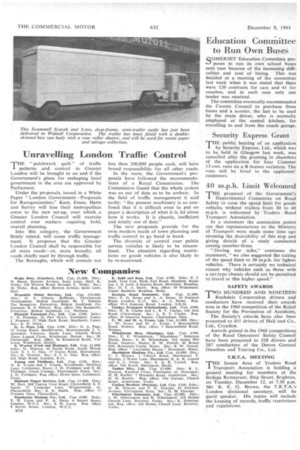Unravelling London Traffic Control
Page 58

If you've noticed an error in this article please click here to report it so we can fix it.
THE" patchwork quilt" of traffic patterns and control in Greater London will be brought to an end if the Government's plans for reshaping local government in the area are approved by Parliament.
Under the proposals, issued in a White Paper "London Government—Proposals for Reorganization," Kent, Essex, Hens and Surrey will lose their metropolitan areas to the new set-up, over which .a Greater London Council will exercise control over mattersrequiring bold, overall planning.
Into this category, the Government firmly intend, will come traffic management. It proposes that the Greater London Council shall be responsible for all main roads—or, more broadly, all roads chiefly used by through traffic.
The Boroughs, which will contain not less than 200,000 people each, will have broad responsibility for all other roads.
In the main, the Government's proposals have followed the recommendations of a Royal Commission. The Commission found that the whole system was so out of date as to be archaic. In the field of traffic management it said tartly: "the present machinery is so confused that it is difficult even to put on paper a description of what it is, let alone how it works. It is chaotic, inefficient and totally out of date."
The new proposals provide for the twin modern needs of town planning and traffic control to go hand in hand.
The diversity of control over public service vehicles is likely to be streamlined. The situation regarding restrictions on goods vehicles is also likely to be re-examined.




































































































































